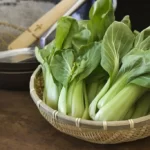Palm trees are renowned for their elegant fronds, their association with tropical paradises, and the way they evoke a sense of relaxation. Whether lining the shores of a sandy beach or adding a touch of the exotic to gardens, palm trees are cherished for their iconic appearance. Yet, for all their allure, palm trees have a critical vulnerability – their sensitivity to cold temperatures. In this article, we delve into the intriguing question: “What Temperature Will Kill a Palm Tree”? Understanding the temperature limits of palm trees is crucial for gardeners and landscapers, especially in regions where frost and freezing conditions can be a threat. We will explore the concept of palm tree cold tolerance, shedding light on the factors that influence it, and examine the damage caused by freezing and frost.
- The Large plant cover is perfect for Plant size 55”-70″high and 84”-94″ round, Heavy-weight FRCs (1.77oz./sq. yard): usually used to extend the growing season in spring and fall, allow 40%-60% light transmittance, and recommend 3°-8°F of freeze protection
- Easy drawstring at the opening makes it easier and quicker to cover plants during harsh weather. The drawstring is sturdy and less effort.
- Our plant blanket is made of high quality Non-woven fabric, allows air and moisture to reach your plants, keep you plants breathable.
- These plant cover is lightweight and soft, it is plant friendly, no harm to plant growing.
- Protect plants from snow hail, frost in the winter and insects,birds during the growing season, No need to remove each morning and replace each evening
Palm Tree Cold Tolerance
Cold tolerance in palm trees is a dynamic and complex trait. It refers to a palm’s ability to withstand and endure low temperatures without suffering fatal damage. Importantly, not all palm species are equally cold-sensitive. The cold hardiness of palm trees varies, with some species thriving in temperate climates while others prefer tropical warmth. Beyond the species differences, factors such as genetics, age, and environmental conditions also play a role in determining a palm tree’s cold tolerance. Therefore, it is essential to recognize that palm trees exhibit a wide range of responses to cold temperatures.
Freezing and Frost Damage
When palm trees are exposed to freezing or frost conditions, they react in ways that can result in various forms of damage. One common response is leaf browning, where the fronds become discolored and can eventually wither. The sensitive growing tips, or apical meristem, of the palm tree can also be severely damaged or killed by extreme cold. This can hinder the tree’s growth and cause deformities in its fronds. In some cases, freezing temperatures can harm the trunk of the palm, resulting in damage that may not become apparent until months after the cold event. As we explore the impact of freezing and frost on palm trees, we will gain a deeper understanding of the vulnerability these iconic trees face when subjected to low temperatures.
Temperature Limits for Common Palm Species
Understanding the temperature limits for common palm species is essential for gardeners and landscapers. Not all palm trees are equally susceptible to cold, and knowing the specific limits for each species can make the difference between thriving and struggling palm trees. Some palm species are surprisingly cold-hardy and can withstand temperatures well below freezing, while others are much more sensitive to the cold. We will provide a range of typical temperature limits for various common palm species, allowing readers to identify and care for their palm trees more effectively. Accurate identification is the first step in determining how to protect these iconic trees from harm when cold temperatures threaten.
Protective Measures
When faced with forecasts of freezing or frosty conditions, taking proactive protective measures can mean the difference between a thriving palm tree and one that has suffered damage. These protective measures include wrapping palm trunks, covering the canopy, and even providing supplemental heat in extreme cases. Additionally, selecting appropriate planting locations and using microclimate advantages, such as proximity to buildings or bodies of water, can help mitigate the impact of cold weather on palm trees. By implementing these strategies, caretakers can significantly increase the chances of their palm trees weathering the cold unscathed.
Conclusion
In conclusion, the temperature limits of palm trees are a critical factor in determining the success and health of these beloved trees in various landscapes. Understanding the complexity of palm tree cold tolerance and its variation across different species is essential for gardeners and landscapers. When it comes to caring for palm trees, knowledge is power. By recognizing the unique needs of each palm species, monitoring weather forecasts, and taking proactive steps to protect these iconic trees from harm when cold temperatures loom, gardeners can ensure that palm trees continue to grace our landscapes, evoking the sense of relaxation and paradise that they are known for.





